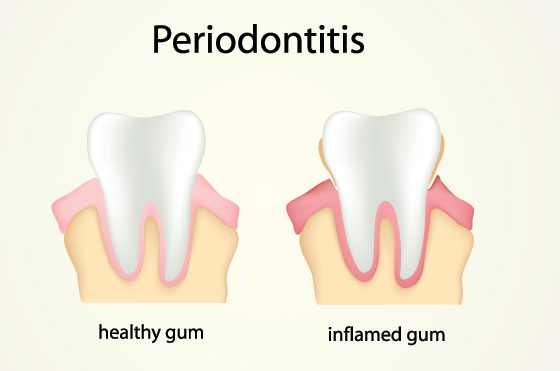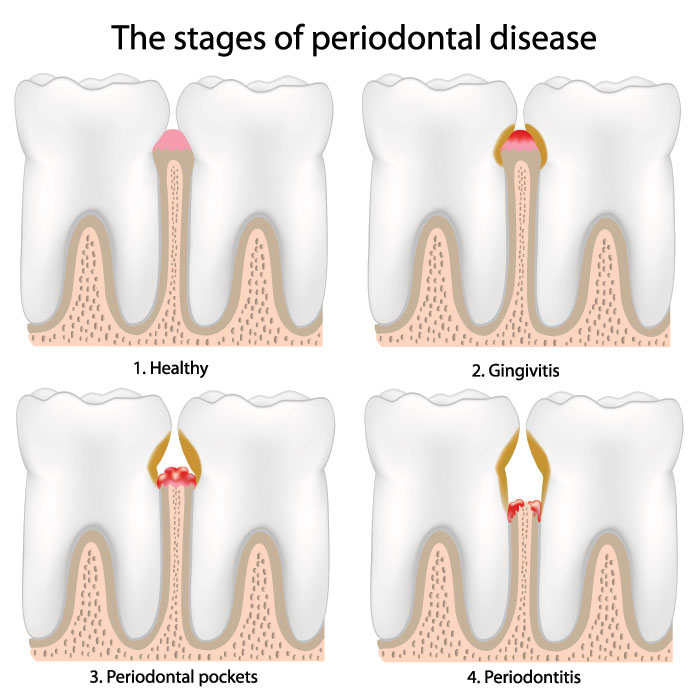What is a Periodontist?
- Home
- What is a Periodontist?
A Periodontist is a dentist who specializes in the soft tissues of the mouth and the underlying bone which supports the teeth. A dentist must first graduate from an accredited dental school before undertaking an additional three years of study within a periodontology residency training program in order to qualify as a periodontist. Dr. Pat Kelsey performed his training at The Ohio State University in Columbus, Ohio, and Dr. Matt Kelsey underwent his training at the University of Minnesota in Minneapolis — both internationally respected programs in clinically relevant, evidence-based periodontics.
The focus of residency training is both surgical and non-surgical management of periodontal disease and the placement of dental implants.
A Periodontist is mainly concerned with preventing the onset of gum disease (periodontal disease), diagnosing conditions affecting the gums and bone, and treating gingivitis, periodontitis and bone loss. Periodontal disease is a progressive condition, and is the leading cause of tooth loss among adults in the developed world.
A Periodontist is able to treat slight, mild, moderate and advanced gum disease by first addressing the bacterial infection that is causing the problem, providing periodontal treatment, then providing information and education on good oral hygiene and the effective cleaning of the teeth.
What is Periodontal Disease?

Periodontal disease begins when the toxins found in bacterial plaque that are present on a person’s teeth start to attack the soft or gingival tissue surrounding the teeth. This bacteria embeds itself in the gum and rapidly breeds, causing a low-grade bacterial infection. As the infection progresses, it starts to burrow deeper into the tissue causing inflammation or irritation between the teeth and gums. The response of the body is to destroy the infected tissue, which is why the gums appear to recede. The resulting pockets between the teeth deepen, and if no treatment is sought, the hard tissue which makes up the bone also begins to be destroyed causing unstable teeth and tooth loss.
Referrals from General Dentists and Self-Referrals
There are several ways treatment from a Periodontist may be sought. In the course of a regular dental check up, if the general dentist or hygienist finds symptoms of gingivitis or rapidly progressing periodontal disease, a consultation with a Periodontist may be recommended. However, a referral is not necessary for a periodontal consultation.
If you experience any of these signs and symptoms, it is important that you schedule an appointment with a Periodontist without delay:
-
Bleeding while eating or brushing – Unexplained bleeding while consuming food or during the course of daily cleaning is one of the most common signs of periodontal infection.
-
Bad breath – Continued halitosis (bad breath) which persists even when a rigorous oral hygiene program is in place, can be indicative of periodontitis, gingivitis or the beginnings of an infection in the gum tissues.
-
Loose teeth and gum recession – Longer looking teeth can signal recession of the gums and bone loss due to periodontal disease. As this disease progresses and attacks the jawbone, (the anchor holding the teeth in place) the teeth may become loose or be lost all together.
- Related health conditions – Heart disease, diabetes, and other conditions are thought to be correlated with periodontitis and periodontal infections. The bacterial infection can spread through the blood stream and affect other parts of the body.
Diagnosis and Treatment
Before initiating any dental treatment, the Periodontist must extensively examine the gums, bone and general condition of the teeth. When gingivitis or periodontal disease is officially diagnosed, the Periodontist has a number of surgical and non surgical options available to treat the underlying infection, halt the recession of the soft tissue, and restructure or replace teeth which may be missing.
- Gingivitis/Slight Periodontal Disease – When the gum pockets exceed 4-5mm in depth, the Periodontist or hygienist may perform scaling and root planing to remove debris from the pockets and allow them to heal. Education and advice will be provided on an effective cleaning regimen thereafter.
- Moderate Periodontal Disease – If the gum pockets reach 4-6mm in depth a more extensive scaling and root planning cleaning might be required. This cleaning is usually performed under local anesthetic.
- Advanced Periodontal Disease – Gum pockets in excess of 6-7mm are usually accompanied by bone loss and gum recession. Scaling and root planning will nearly always be performed as the initial nonsurgical treatment. In addition to those nonsurgical treatments, the Periodontist may recommend surgical treatment to reduce pocket depth.
- Tooth Loss – Where one or several teeth are missing due to periodontal disease, dental implants are an effective option. If the bone is strong enough to provide a suitable anchor for the prosthetic tooth, the implant can be placed. However, if the bone is severely eroded, bone grafts may be performed by the Periodontist to provide a suitable anchor for the new tooth/teeth.

If you think you may have periodontal disease, please call the Kelsey Periodontal Group at 402-934-4745 and schedule a consultation.
